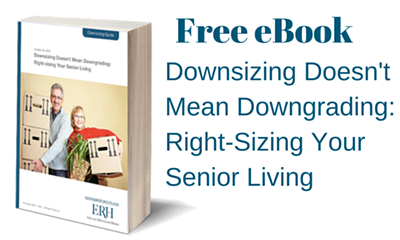 Seniors faced with the need to move away from home and into an assisted living apartment or retirement community often struggle with anticipating the true cost of care. Naturally, there is a significant financial impact on the senior in question. Monthly costs can vary widely, based on geographic location, from a median high of $6,000 in Alaska to a median low of $2,288 in Missouri.
Seniors faced with the need to move away from home and into an assisted living apartment or retirement community often struggle with anticipating the true cost of care. Naturally, there is a significant financial impact on the senior in question. Monthly costs can vary widely, based on geographic location, from a median high of $6,000 in Alaska to a median low of $2,288 in Missouri.
In most cases, those costs are well off-set by the benefit of having round-the-clock care, access to a wider social support network and careful monitoring of wellness regimens.
"Assisted living costs include all basic living expenses such as rent, utilities and food," according to A Place for Mom, but also include many services people fail to consider, such as "24-hour security services, housekeeping, health monitoring services, lawn care, property taxes and insurance, trash removal, repairs and maintenance, and the most frequent things people forget to include— social activities and entertainment."
But there's more than just out-of-pocket cost to factor in when making such a decision. We must also consider the potential impact on family caregivers when opting to forego residential assisted care in favor of an in-home care arrangement.
Let's explore some of these aspects in more depth.
Many seniors fear becoming a "burden" to family members. But some who resist a move into assisted care can become just that.
That's not stating the case particularly delicately, but it is an honest statement. If a person can no longer safely function in an independent setting, the onus of care will fall on someone, and that is most often on a spouse or child. According to Sara Hogan, writing for the non-profit organization Life Happens, the ancillary cost of providing full-time care can be crushing for a family member.
"Many caregivers say that you don’t plan on being a caregiver— it often happens to you," Hogan wrote. "That’s how I found myself caring for my mother. We didn’t have a plan in place, and since I was the only one of my siblings still living in the same state, I became her caregiver."
"The next seven years required a delicate balance of responsibilities, as I continued to work full-time and my husband and I raised our three teenage children. Inevitably priorities changed and sacrifices had to be made to provide my mom with the care that she needed, which impacted all areas of our lives," she said.
As Hogan noted, people who leave the workforce in order to provide full time care to an aging parent lose an average of $300,000 in income and benefits, which can result in an immense cascade on a family's finances. And muted or negative wealth growth is far from the only concern; the provision of care can change a family's entire dynamic.
"The ripple effect of caregiving can also quickly reach other areas of a caregiver’s life, including health and family relationships. When you’re so focused on caring for a loved one, it’s easy to forget to care for yourself," she said. "Sometimes there just may not be enough time in the day, so it’s easy to understand why about one in five family caregivers believes their health has gotten worse as a result of their responsibilities."
In-home care isn't necessarily cheaper than assisted care.
In fact, in some cases, it may be more expensive. It's also notoriously difficult to budget for. There are a number of convoluted steps that must be taken to accurately calculate in-home care expenses:
- List out the various types of care needed over the course of a week
- Figure out the number of hours needed weekly for each service
- Multiply each by the prevailing rate in one's locale for the required type of provider,
- Add these together with fixed costs (health insurance premiums, maintenance medication costs, rent or mortgage, taxes, health alert and/or security monitoring fees, etc.)
- Budget in a financial safety margin
That's pretty complex.
On the other hand, a move to an assisted living apartment can simplify some of that budgeting process. You don't need to figure out the different potential rates for in-home nursing, physical therapists, occupational therapists, care managers, meal delivery services and the like, because these services are, for the most part, included in the monthly fee for residential care.
In-home care isn't by and large safer, either.
Often, too, the quality of care received at a reputable, CMS-accredited retirement community is higher than the care that one might receive in-home. A 2010 study published in the journal Primary Health Care found that in-home nursing care providers are, in many cases, unqualified to provide the level of care they are tasked with giving, and many work with minimal supervision.
Where an assisted living facility or retirement community is typically well-equipped to meet seniors' care needs, in-home care suffers from limitations on available resources— especially in urgent situations. Indeed, according to Patient Safety and Quality: An Evidence-Based Handbook for Nurses, "the unique characteristics of home health care may make it difficult to use— or necessary to alter— interventions that have been shown to be effective in other settings."
When making your decision about a move to an assisted living apartment, consider all the angles.
No one wants to give up his or her sense of independence. That's natural.
But remember, assisted living doesn't take one's independence away. Rather, it provides a safety-augmented environment in which you can continue living as independently as possible. And if you weigh it against all the potential costs of in-home care, in many cases you'll find that assisted living is the more reasonable option.












